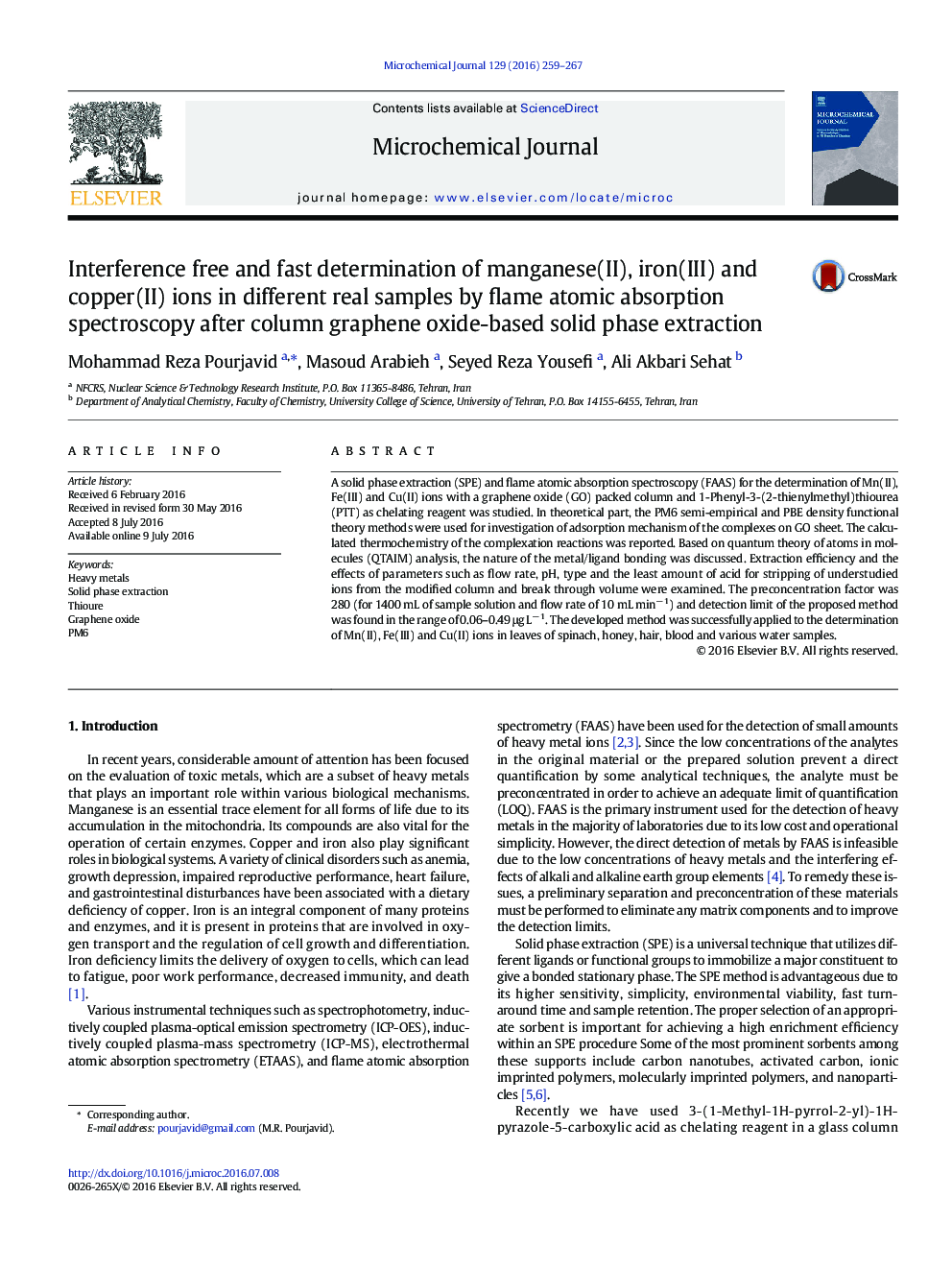| Article ID | Journal | Published Year | Pages | File Type |
|---|---|---|---|---|
| 1227616 | Microchemical Journal | 2016 | 9 Pages |
•We use a synthesized graphene oxide for preconcentration of Mn, Fe and Ni ions.•Adsorption mechanism was investigated by PM6 and PBE density functional theory methods.•LODs were found to be 0.49, 0.37 and 0.06 ng mL− 1 for Mn, Fe and Cu, respectively.•The preconcentration factor is 280 and ion separation is so fast.•It is applied to the determination of Mn, Fe and Cu ions in real samples.
A solid phase extraction (SPE) and flame atomic absorption spectroscopy (FAAS) for the determination of Mn(II), Fe(III) and Cu(II) ions with a graphene oxide (GO) packed column and 1-Phenyl-3-(2-thienylmethyl)thiourea (PTT) as chelating reagent was studied. In theoretical part, the PM6 semi-empirical and PBE density functional theory methods were used for investigation of adsorption mechanism of the complexes on GO sheet. The calculated thermochemistry of the complexation reactions was reported. Based on quantum theory of atoms in molecules (QTAIM) analysis, the nature of the metal/ligand bonding was discussed. Extraction efficiency and the effects of parameters such as flow rate, pH, type and the least amount of acid for stripping of understudied ions from the modified column and break through volume were examined. The preconcentration factor was 280 (for 1400 mL of sample solution and flow rate of 10 mL min− 1) and detection limit of the proposed method was found in the range of 0.06–0.49 μg L− 1. The developed method was successfully applied to the determination of Mn(II), Fe(III) and Cu(II) ions in leaves of spinach, honey, hair, blood and various water samples.
